< Back
Top 10 SciSummary Alternatives in 2024
Declan Gessel
Sep 25, 2024
You might find yourself drowning in a sea of research when writing an essay. At first, the task feels exciting. After all, you love learning and discovering new things. But then you realize you're unsure where to start and can't write your paper until you extract the relevant information from all these sources. This is where SciSummary comes in.
This AI tool summarizes scientific research to help you quickly find relevant information for your paper so you can write your essay without drowning in research. This guide will help you understand SciSummary’s value and introduce you to some alternatives, just in case you need to find sources for essay with AI that are a bit different. Specifically, we will help you know the top 10 SciSummary alternatives 2024.
One helpful tool for quickly locating sources for your essay is Jotbot's source finder. This invaluable resource can help you reach your goals when writing a scientific paper by assisting you in finding the information you need to write your essay.
Table Of Contents
Common Pitfalls When Using AI Summarization Tools and How to Overcome Them
Write Smarter With Jotbot's Source Finder — Start Writing for Free Today
What is SciSummary?
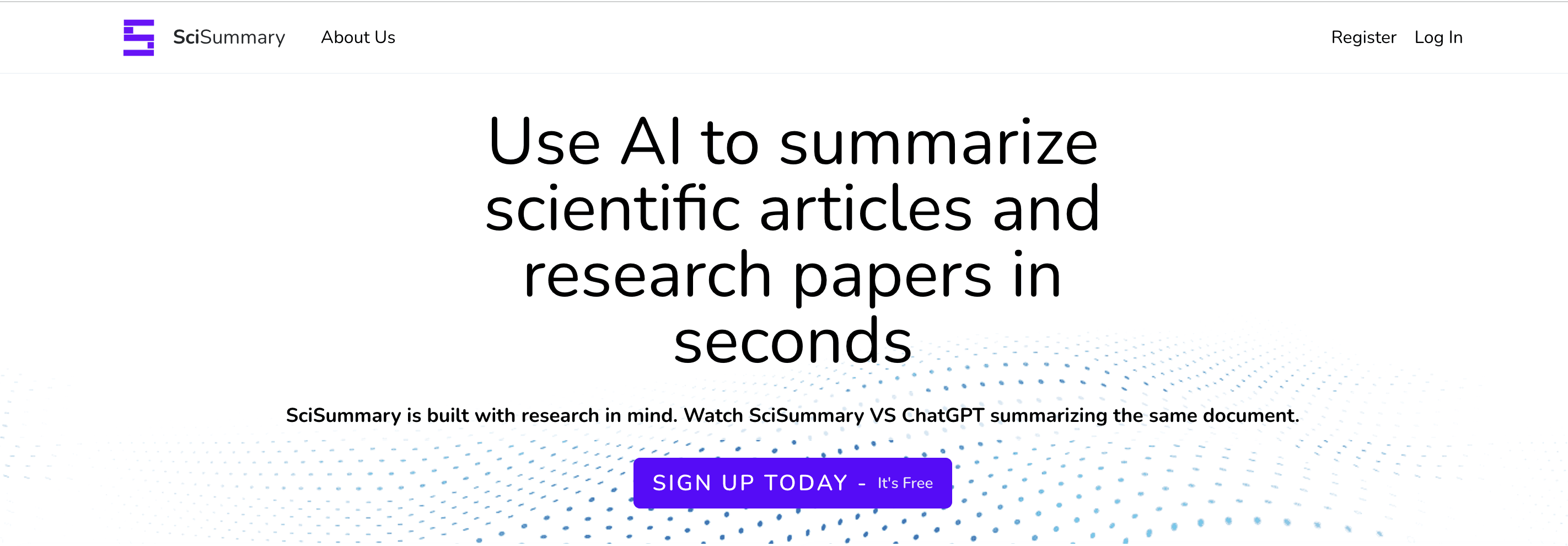
SciSummary is an innovative AI tool designed to provide concise summaries of scientific papers. It makes it easier for researchers, students, and academics to digest complex research articles quickly. By leveraging advanced AI models like GPT-3.5 and GPT-4, SciSummary enables users to stay updated with the latest scientific breakthroughs without reading lengthy and intricate documents.
Overview of SciSummary
AI-Powered Summarization
SciSummary utilizes cutting-edge artificial intelligence to condense scientific literature into easily understandable summaries. Users can submit articles via email or upload them directly, receiving a summary in their inbox within minutes. This rapid summarization process is particularly beneficial for busy professionals and students who must keep pace with a vast amount of research.
User-Friendly Features
The platform is designed with research in mind, offering features such as the ability to summarize articles up to 200,000 words and import references for summarization. It also provides a free plan that allows users to summarize up to 10,000 words per month, making it accessible for those who may not require extensive usage.
Limitations of SciSummary
While SciSummary is popular among its user base, it may not be the best fit for everyone due to several factors:
Feature Requirements
Some users may seek additional functionalities that SciSummary does not provide. For instance, researchers might need tools for AI writing assistance, note-taking capabilities, or citation generation—features that are essential for comprehensive research management.
Integration Needs
Users often look for tools that integrate seamlessly with their existing workflows or other software. If SciSummary lacks compatibility with specific platforms or tools, users may explore alternatives that better fit their ecosystem.
Customization Options
SciSummary may not offer extensive customization options for summarization processes. Users with specific needs regarding how summaries are generated or presented might find this limiting.
Accuracy Concerns
Although powered by advanced AI models, the accuracy of summaries can vary, especially for highly technical or specialized content. Users requiring precise interpretations may prefer tools that allow more control over the summarization process.
Dependency on AI Models
Users may become overly reliant on AI-generated summaries, which might hinder their understanding of the original scientific content. A balance between using AI tools and engaging deeply with the literature is essential for comprehensive learning.
Related Reading
• How To Find Good Sources
• Using AI For Research
• Citing ChatGPT
• How To Find Academic Sources
• How To Cite AI In MLA
• AI For Research Paper Writing
• Essay Sources
• AI In Academic Writing
• Most Reliable Sources For Research
• How To Get ChatGPT To Cite Sources
What to Look for in a SciSummary Alternative

Summarization Capabilities: What to Look For
Any summarization tool's primary purpose is to deliver quick and accurate summaries of academic articles, research papers, and other content types. High-quality summarization is critical for researchers who must rapidly understand lengthy documents' main points and findings without getting bogged down in details. When evaluating tools, look for options that can summarize various formats, including PDFs, Word documents, and web articles, while allowing flexibility in the length and detail of the summaries.
How to Evaluate
To assess summarization capabilities, check sample summaries on the websites of the tools you’re considering. This will give you an idea of the quality and accuracy of the summaries produced. Next, use the tool to summarize a few of your research papers. Assess whether the summaries capture the original documents' essential points, findings, and nuances. Finally, explore user reviews and testimonials to gauge the effectiveness of the summarization capabilities from real-world users.
AI-Driven Writing and Note-Taking: Why They Matter
Beyond summarization, many users benefit from tools that offer AI-driven writing assistance and note-taking features. These functionalities can enhance productivity by helping users draft text, organize thoughts, and manage citations more effectively. A tool that combines these features can streamline the entire research process, making it easier to produce high-quality work.
How to Evaluate
When evaluating AI writing and note-taking features, explore additional features first. Investigate whether the tool offers AI writing assistance or note-taking functionalities. Look for features like text generation, grammar checking, or integrated note-taking sections. Next, create a draft using the AI writing assistance feature (if available) and see how it enhances your writing process.
Check if it suggests improvements or generates relevant content based on your input. Finally, use the note-taking feature (if available) to see how well it organizes your notes. Can you categorize them by topics or projects? Is there an easy way to retrieve them later?
Integrations and Flexibility: Streamlining Your Workflow
A productivity tool should seamlessly integrate with other software you use regularly. Compatibility with platforms like Google Docs, Microsoft Word, or citation management tools enhances workflow efficiency by allowing users to move between applications without hassle. The more flexible a tool is in integrating with existing systems, the easier it will be to adapt to your daily routine.
How to Evaluate
Check the tool’s website or documentation for integrations with other platforms like Google Docs, Microsoft Word, or citation management tools. If possible, try connecting the tool with your existing software (e.g., importing documents from Google Drive) to see how well it works. Also, consider how well the tool fits into your current workflow. Does it streamline processes, or does it require significant changes?
Customization and Usability: Finding the Right Fit
The best tools are intuitive and easy to navigate while offering customization options, allowing users to tailor functionalities according to their needs. A user-friendly interface reduces the learning curve and enhances overall productivity by enabling users to focus on their work rather than figuring out how to use the tool.
How to Evaluate
Spend time navigating the tool’s interface. Is it intuitive? Can you easily find features without extensive searching? Next, look for settings that allow you to tailor the tool’s functionality (e.g., adjusting summary length, changing themes, or modifying notification settings). Finally, ask colleagues or peers about their experiences with customization and usability. Their insights can help you gauge whether the tool is user-friendly.
Cost and Accessibility: Finding the Best Value
Finally, consider the tool's cost and accessibility. A good productivity tool should offer value for money while being affordable for individual users or teams. It's also beneficial if a free version provides sufficient features for essential use before committing to a paid plan.
How to Evaluate
Visit the pricing section of the tool’s website. Compare different plans and the features included in each tier. If a free version is available, use it extensively before committing to a paid plan. Ensure that it adequately meets your basic needs. Also, think about whether the cost aligns with your budget and if the features provided justify the expense over time.
Practical Steps for Evaluation
Identify Your Needs
List specific requirements based on your research habits (e.g., types of documents, preferred summary length).
Research Alternatives
Use comparison websites or forums (like G2 or Capterra) to discover various tools that fit your criteria.
Test Multiple Tools
Use multiple tools' free trials or demo versions to evaluate how well each alternative meets your needs.
Gather Feedback
Consult colleagues or peers who have experience with different tools to gain insights into their effectiveness and usability.
Make an Informed Decision
After thorough evaluation, choose a tool that best aligns with your requirements and enhances your productivity.
Write more innovative, not harder, with Jotbot's AI writing assistant. Start finding sources that are accessible with Jotbot's source finder today. Sign in with Google and get started in seconds.
Top 10 SciSummary Alternatives in 2024
1. Jotbot (ICP): Your AI-Powered Writing Assistant

Jotbot goes beyond simple summarization to offer a comprehensive set of AI-powered writing tools. It provides summarization, note-taking, citation finding, and even full essay writing. This makes it an ideal choice for users who need more than just a summary tool but a complete AI writing assistant.
Key Features
AI Summarization: Quickly generates summaries of academic papers, research articles, and videos.
AI Note-Taking: Organizes notes efficiently, making it easy to refer back to key points.
Citation Finder: Automatically finds and formats citations in various styles like APA, MLA, or Chicago.
Full Essay Writing: Jotbot can write complete essays, which is perfect for students or professionals who need drafts quickly.
Best For
Researchers, students, or professionals who need a versatile tool for managing their writing and research workflows. Those who want an all-in-one solution for summarization, note-taking, citation generation, and writing.
Common Pitfall
Relying too much on AI-generated essays without refining the content can result in inaccuracies or lack of depth.
Solution
Use Jotbot as a starting point, and then edit and fine-tune the content to meet your specific needs.
2. Quillbot: The All-In-One Academic Tool
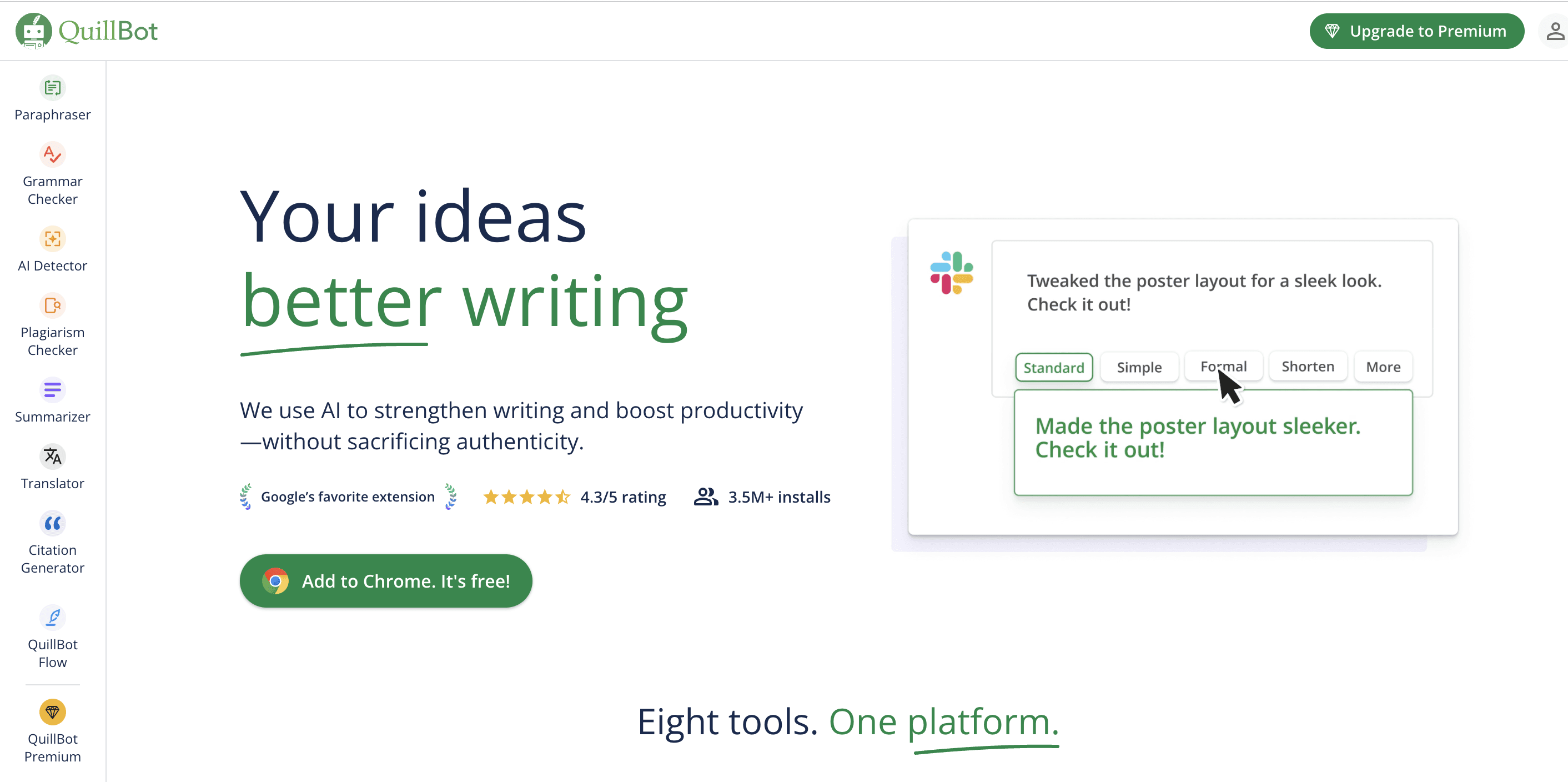
Quillbot is a well-rounded AI tool that offers summarization, paraphrasing, and grammar correction. Its user-friendly interface and Chrome extension make it a popular choice for writers looking for help with content improvement in addition to summarization.
Key Features
Summarization: Generates concise summaries of academic and general articles.
Paraphrasing: Rewrites content in a more transparent, more concise way without losing the original meaning.
Grammar Check: Improves writing by correcting grammatical errors.
Best For
Writers who need assistance with paraphrasing or improving the readability of their work. Users who want a combination of summarization and grammar-checking features.
Common Pitfall
Over-paraphrasing can sometimes lead to altered meanings of the original text.
Solution
Carefully review paraphrased content to ensure it accurately reflects the intended message of the source.
3. SMMRY: The Quick Summarization Tool
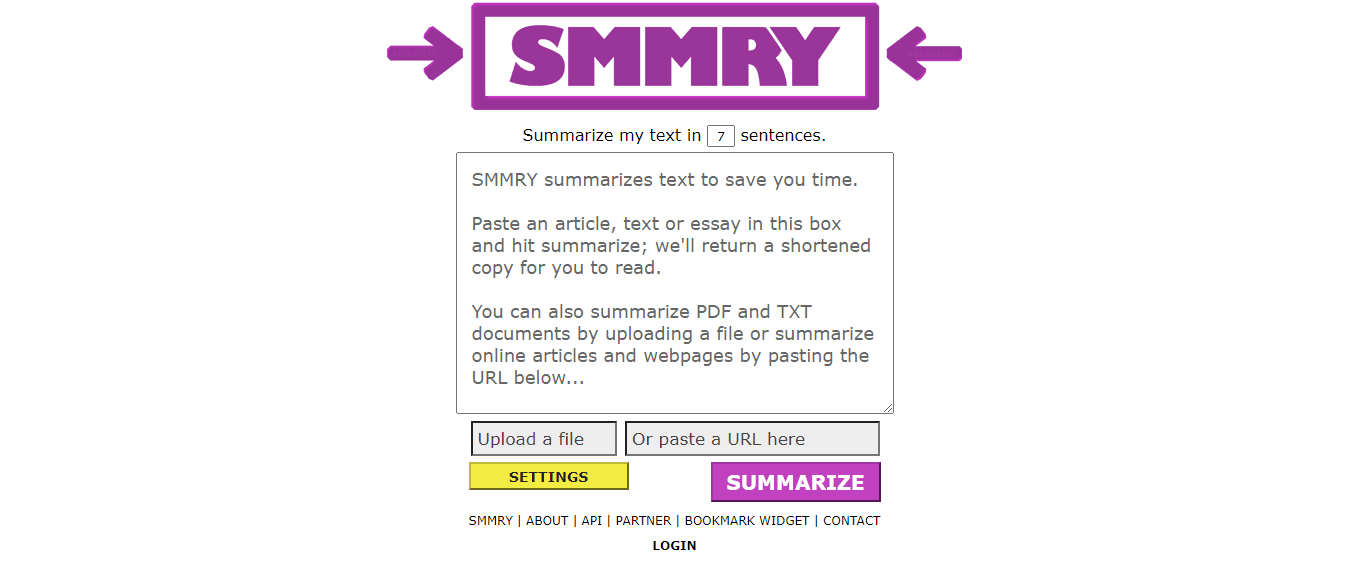
SMMRY is a simple but effective summarization tool focused on quickly condensing long-form content. It’s best for users who need fast, no-frills summarization without advanced features like note-taking or citation generation.
Key Features
Quick Summarization: Fast and efficient summarization of articles, blog posts, or research papers
Easy to Use: No account or setup is needed; just paste the text and get a summary.
Best For
Users who need a quick overview of content without any extra features. Bloggers, casual readers, or students who want fast summaries of articles or web pages.
Common Pitfall
Limited ability to handle complex academic papers or highly technical content.
Solution
Use SMMRY for simple summaries and pair it with a more advanced tool like Jotbot for academic papers or detailed articles.
4. Scholarcy: The Academic Summarization Tool
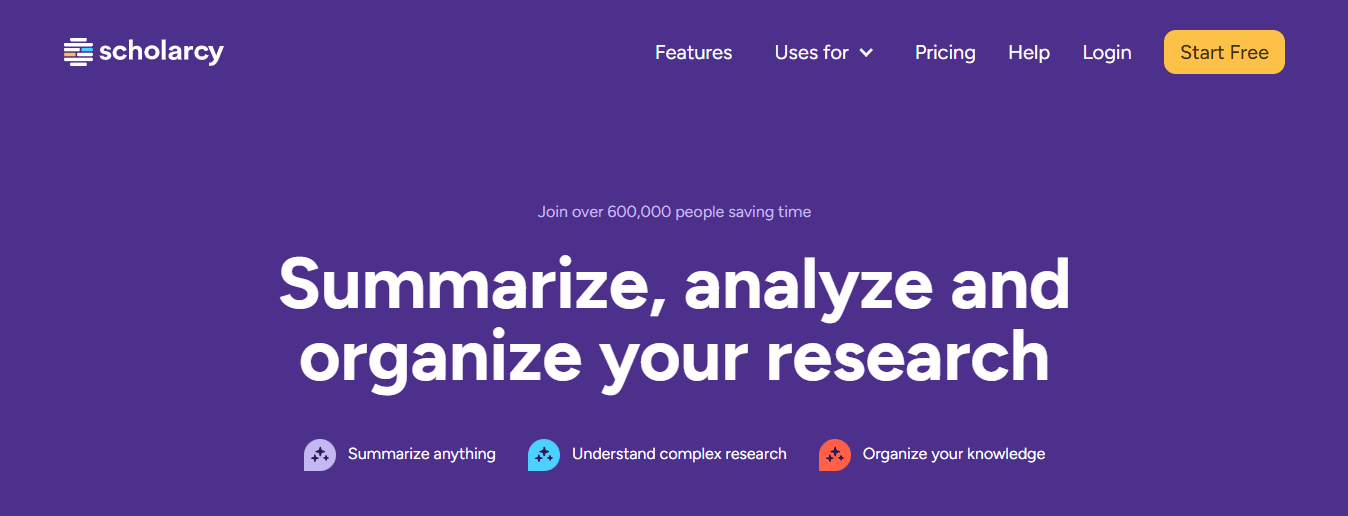
Scholarcy is an academic-focused summarization tool that generates detailed summaries and extracts key references from research papers. It’s designed for students and researchers needing precise, research-driven summaries.
Key Features
Summarization: Focuses on academic papers, pulling out key findings, contributions, and references.
Citation Management: Exports references to tools like EndNote and Zotero.
Best For
Academics, researchers, or students need precise summaries of research articles and extracted citations.
Common Pitfall
It can be too technical for non-academic users or those unfamiliar with scholarly terminology.
Solution
Use Scholarcy for academic content and pair it with a tool like Jotbot for easier readability or expanded writing support.
5. SummarizeBot: The Multi-Format Tool
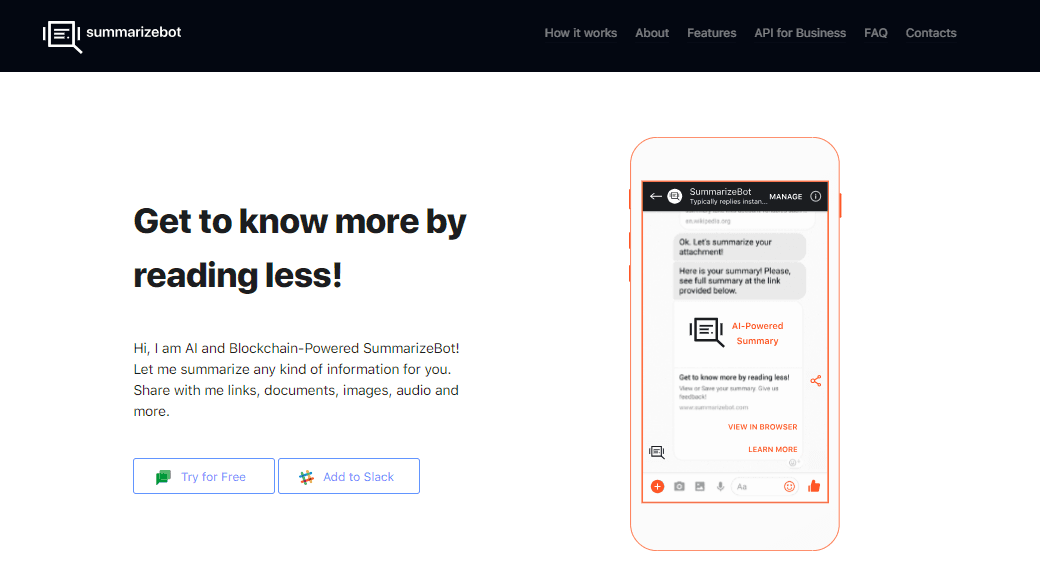
SummarizeBot is a versatile summarization tool that works across different content types, including text, audio, video, and images. It’s ideal for users who need multi-format summarization for various media.
Key Features
Multi-Format Support: Summarizes PDFs, audio files, videos, and text.
AI-Powered Summarization: AI is used to extract key points from various types of content.
Best For
Users need a flexible summarization tool for different content formats (e.g., researchers and content creators).
Common Pitfall
Struggles with very lengthy or highly technical documents.
Solution
Break large documents into smaller sections for more accurate summarization, or use a specialized tool like Jotbot for in-depth academic papers.
6. Resoomer: For Academic and Technical Summaries

Resoomer is explicitly designed to summarize academic papers, technical documents, and news articles. It’s useful for students and professionals who need quick summaries of detailed, research-heavy content.
Key Features
Summarization for Research and Technical Documents: Tailored for academic and technical content.
Browser Extension: Easily summarize web pages or articles in your browser.
Best For
Students, researchers, or professionals need summaries of technical or research-heavy documents.
Common Pitfall
You can sometimes lose key arguments or conclusions in highly technical papers.
Solution
Review the original document for meaningful insights that may not have been captured in the summary, or use Jotbot to ensure a deeper understanding of complex topics.
7. TLDR This: The Professional Summarizer
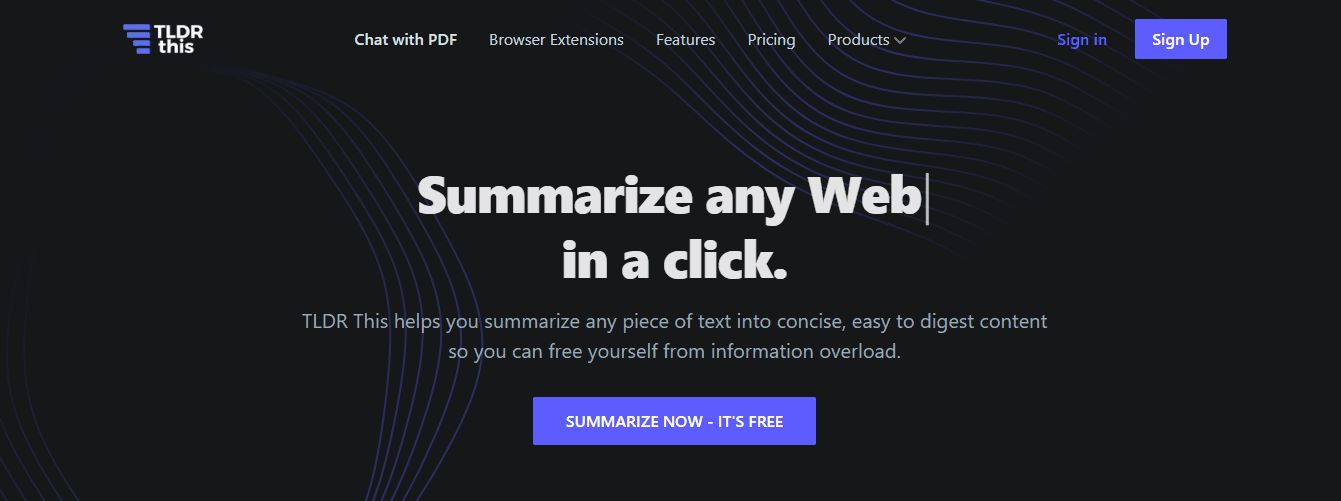
TLDR This is a tool for condensing long articles or research papers into brief, easy-to-read summaries. Its primary use is for busy professionals or students who need to understand the core points of lengthy texts quickly.
Key Features
Summarization: Condenses long-form articles and research papers into digestible summaries.
Chrome Extension: Quickly summarize articles while browsing online.
Best For
Students, professionals, or casual readers need lengthy articles or paper summaries.
Common Pitfall
Summaries can sometimes be too short, missing out on crucial details.
Solution
Use TLDR for a quick overview and complement it with a more thorough summarization tool like Jotbot when more detail is needed.
8. Paperpile: The Citation Manager with Summarization Tools

Paperpile is a citation manager with summarization capabilities, making it an ideal tool for academics needing reference management and summary features. It integrates with major academic databases and Google Docs.
Key Features
Summarization and Reference Management: Generates summaries while organizing and storing references for academic papers.
Google Docs Integration: Easily manage citations and write research papers directly in Google Docs.
Best For
Researchers and academics seek a summarization tool with robust reference management features.
Common Pitfall
The summarization capabilities are less advanced than those of dedicated summary tools like Jotbot.
Solution
Pair Paperpile with a more robust AI summarization tool if the summary quality is lacking.
9. ContentBot: The Content Creator Assistant
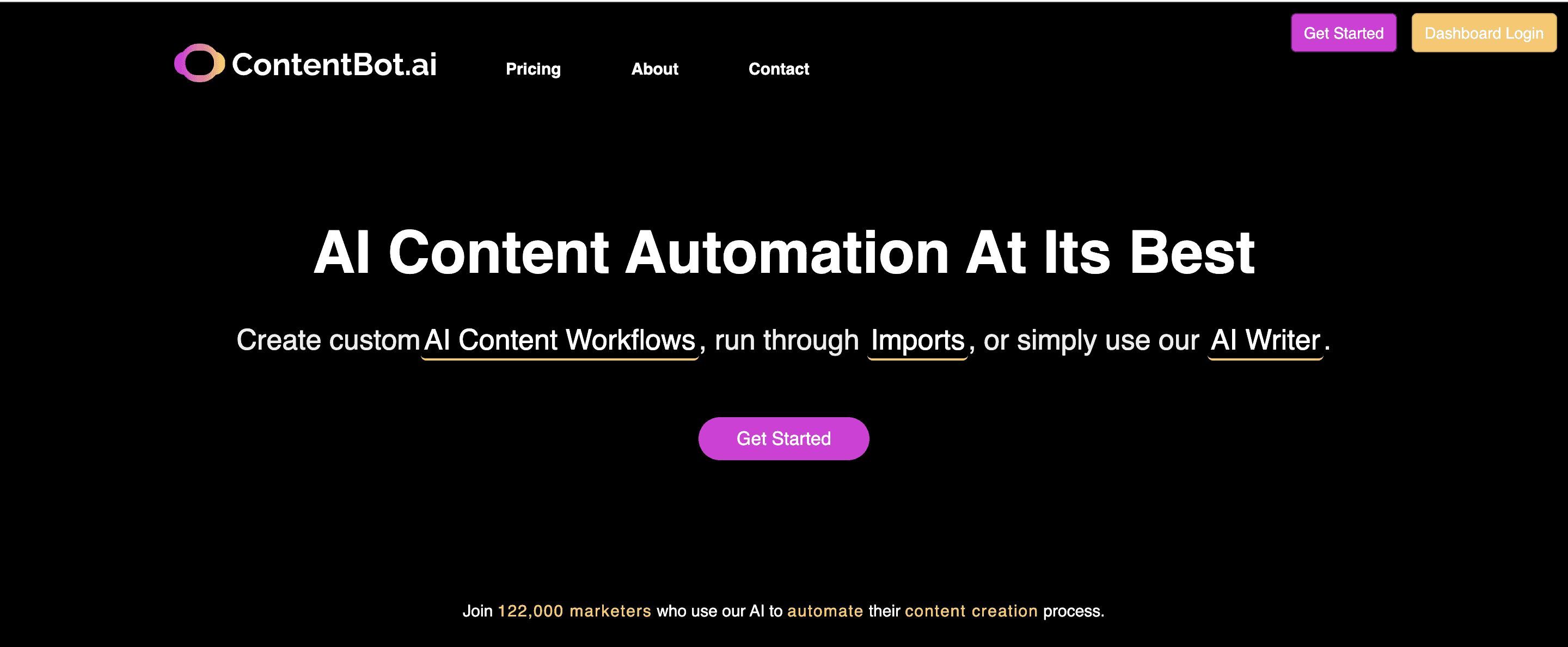
ContentBot is an AI tool designed for content creators. It offers summarization, blog writing, and headline generation. It benefits marketers, bloggers, or professionals needing fast content generation.
Key Features
Summarization and Content Generation: Summarizes content and generates blog posts, emails, or social media headlines.
AI-Powered Writing: Automatically creates content ideas and drafts.
Best For
Bloggers, marketers, and content creators need both summarization and content generation.
Common Pitfall
It may be less effective for academic or research-heavy content.
Solution
Use ContentBot for creative or marketing content and switch to Jotbot for academic papers or research summaries.
10. Frase: The SEO Summarization Tool

Frase is a content optimization tool that helps users research and create well-optimized summaries and content briefs. It’s beneficial for content marketers and SEO professionals.
Key Features
AI-Generated Summaries and Briefs: Creates summaries and content outlines optimized for SEO.
Research Assistant: Helps users find relevant content and generate content ideas.
Best For
Marketers and content creators need research-driven summaries and briefs.
Common Pitfall
It is not ideal for academic writing or scientific research.
Solution
Use Frase for SEO content creation, but turn to Jotbot or other academic-focused tools for research summaries.
Write more brilliantly, not harder, with Jotbot's AI writing assistant. Start finding sources that are accessible with Jotbot's source finder today. Sign in with Google and get started in seconds.
Common Pitfalls When Using AI Summarization Tools and How to Overcome Them

Misinterpretation: How to Get AI Summarization Tools to Understand You
AI models don’t have brains like humans do. Instead, they rely on statistical patterns in data to create responses. This means that, when summarizing content, these tools might misinterpret a document's context or critical points, leading to inaccurate summaries that do not reflect the original content accurately.
To overcome this pitfall, you need to provide clear instructions. When using an AI summarization tool, provide specific instructions on what aspects of the text should be emphasized. For instance, specify whether you want a focus on methodologies, results, or conclusions.
You should also review summaries thoroughly. Always read the generated summary to ensure it aligns with your understanding of the original text. If discrepancies are found, adjust your input instructions accordingly.
Factual Errors: Avoid AI Summarization Tools That Don't Know What Time It Is
AI models are trained on vast amounts of data to create text that reflects human writing. However, they can’t fact-check as humans do. As a result, AI models may generate summaries that contain factual inaccuracies or outdated information, potentially compromising the credibility of your work.
To avoid this, cross-verify information. After obtaining a summary, cross-check critical facts against the original document or reputable sources to confirm accuracy. You should also use up-to-date tools. Choose AI summarization tools regularly updated and trained on current data to minimize the risk of outdated information being included in summaries.
Loss of Detail: Don’t Let AI Summarization Tools Condense Your Work to Death
Summarization tools often condense information significantly, which can omit essential details or nuances crucial for understanding complex topics. To overcome this, adjust summary length settings. Many tools allow you to customize the length of the summary. Opt for extended summaries to retain more detail when dealing with complex texts. You should also supplement with manual notes. After generating a summary, take additional notes on key points that may have been overlooked. This can help ensure you have a comprehensive understanding of the material.
Lack of Cohesion: Get AI Summarization Tools to Write Better
Especially in extractive summarization methods, the resulting summaries may need more coherence because they pull sentences directly from the source without ensuring they flow logically together. To overcome this, use abstractive summarization tools. Opt for tools that utilize abstractive summarization techniques, which generate new sentences and improve cohesion whenever possible. You can also edit for flow. After obtaining a summary, revise it for coherence and logical flow before using it in your work.
Ambiguity: Make AI Summarization Tools Write What You Need
AI summarization tools may only sometimes align with users' specific needs or preferences, leading to summaries that are either too vague or not tailored for their intended audience. To overcome this, define your audience clearly. Specify who will be reading the summary (e.g., executives, academics) and what information is most relevant for them. You should also iterate based on feedback. Gather feedback from peers or colleagues on the usefulness of generated summaries and adjust your approach based on their input.
Over-Reliance on AI: Don’t Let AI Summarization Tools Do All the Work for You
Users may become overly dependent on AI-generated content, hindering their ability to engage deeply with source materials and develop critical thinking skills. To overcome this, use summaries as starting points. Treat AI-generated summaries as initial drafts or starting points rather than final outputs. Engage with the original texts to deepen your understanding. You should also balance AI use with personal analysis. Make it a practice to analyze key texts alongside summarization tools personally. This will help maintain critical engagement with the material.
Write more innovatively, not harder, with Jotbot's AI writing assistant. Start finding sources that are accessible with Jotbot's source finder today. Sign in with Google and get started in seconds.
Related Reading
• Best AI Tool For Research
• Reference Finder
• Best AI For Research
• How to Cite AI
• AI For Literature Review
• Websites Like Google Scholar
• AI That Cites Sources
• Best Academic Search Engines
• Academic Research Software
• How To Use Chat GPT For Research
• Best Research Tools For Students
How Jotbot is the Best Solution for Research and Writing

Jotbot – A Comprehensive AI Writing Assistant
Jotbot stands out as a summarization tool and an all-in-one AI-powered writing assistant designed to manage various research and writing tasks. Its capabilities go beyond summarization to include AI-driven note-taking, citation finding, and even entire essay generation, making it an ideal solution for students, researchers, and professionals.
AI Summarization: More than Just a Summary
Jotbot's AI-powered summarization provides accurate, concise overviews of complex articles, research papers, and videos. This feature is perfect for anyone needing a quick yet comprehensive understanding of academic or professional content.
When managing multiple sources or lengthy papers, Jotbot helps you save time by summarizing key points. This allows you to focus on other tasks without losing the essence of the material.
AI Note-Taking and Citation Finder: Organize and Reference with Ease
Jotbot doesn't just summarize; it also helps organize research by offering AI-powered note-taking and a built-in citation finder. You can quickly generate citations from sources when writing an essay or compiling research notes.
Managing references and organizing notes can be time-consuming for academic writers and researchers. Jotbot simplifies this process by automating citation generation and keeping your notes structured, making incorporating references into your writing easy.
Complete Essay Writing: From Research to Draft in One Tool
Jotbot is more than a summarization or note-taking tool—it can write complete essays using its AI-driven essay writer. After compiling your sources and generating summaries, Jotbot can draft well-structured essays with citations, saving you time and effort.
For students or researchers facing tight deadlines, Jotbot’s ability to generate complete drafts from your notes and research is invaluable. It helps users produce high-quality work quickly while ensuring that citations are accurate and properly formatted.
Why Jotbot is the Best Solution
Jotbot provides all the tools necessary for research, writing, and managing academic tasks in one place. Its potent combination of summarization, note-taking, citation finding, and essay writing makes it the best solution for users looking for a comprehensive tool that saves time while maintaining accuracy and academic integrity.
Write Smarter With Jotbot's Source Finder — Start Writing for Free Today
Jotbot is an exceptional tool built to help students with their writing assignments. This AI tool quickly finds relevant sources for your essays. Instead of starting an essay by staring at a blank page, let Jotbot find sources for you. First, type in your topic, and let Jotbot summarize relevant research. Jotbot helps writers write better and faster by finding the sources and research to help them get started.
Related Reading
• Elicit AI
• Scholarcy AI
• AI Research Tools
• Sourcely
• Consensus AI Tool
• Mendeley Alternatives
• Cite This For Me Alternative
• Scholarly Sources Examples
• Academic Sources Examples
• How to Find Scholarly Sources
• List of Scholarly Sources
• Examples of Peer Reviewed Sources
• How to Cite a Book
• How to Cite an Article
• How to Cite
• How to Cite a PDF
• How to Cite Multiple Authors MLA
• How to Cite a Website in Text
• How to Cite a Lecture
• How to Cite ChatGPT
Write more, better, faster.
Your personal AI document assistant












